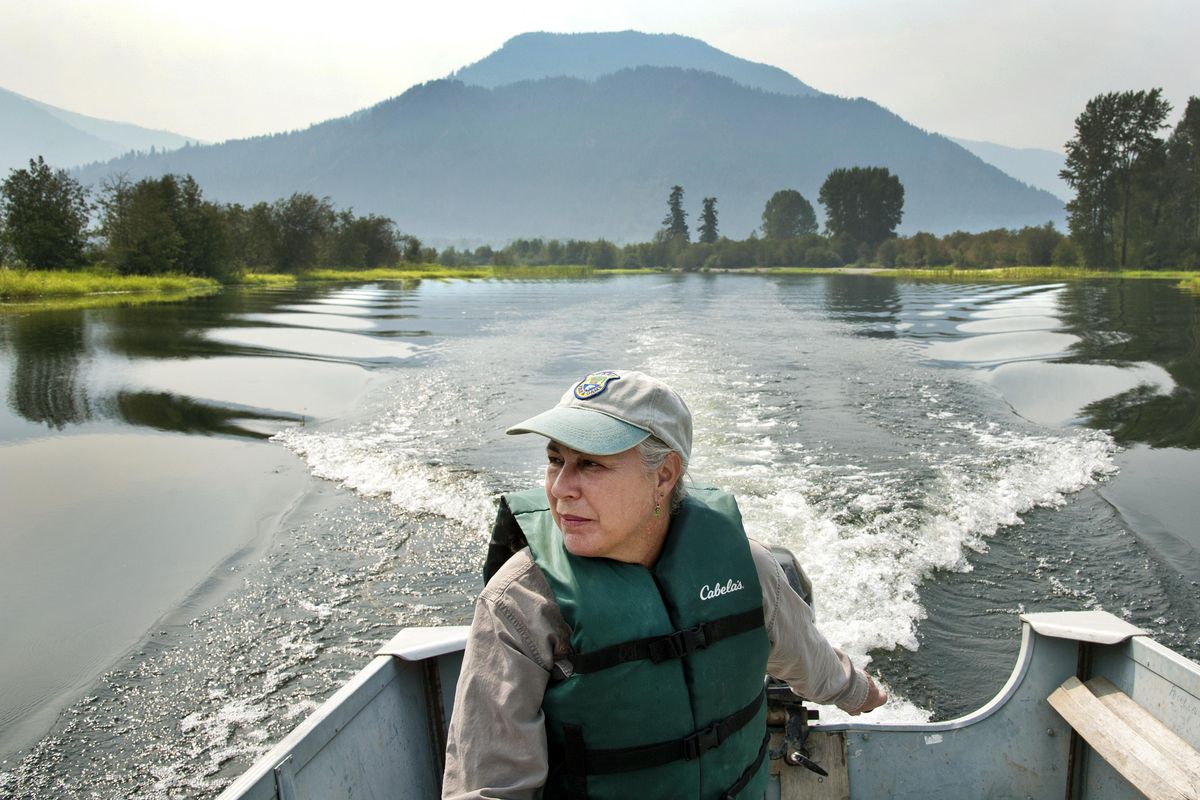Effort to preserve the Clark Fork River Delta gets cash infusion from BPA settlement

Tracks in the Clark Fork Delta’s mudflats hint at what a popular hangout it is for wildlife.
Bear and moose are common on the delta’s low-lying islands, as are smaller animals, such as muskrats and ermine. Migrating waterfowl use the 5,600-acre delta as a rest stop, and the willows attract nesting song birds.
“Even through the delta is not pristine, it’s a pretty magical place from a wildlife perspective,” said Chip Corsi, the Idaho Department of Fish and Game’s regional supervisor in Coeur d’Alene.
Efforts to preserve the fertile habitat where the Clark Fork River spills into Lake Pend Oreille will get a cash infusion over the next 10 years.
The Bonneville Power Administration will pay the state of Idaho $24 million over a decade for wildlife habitat that was lost when Albeni Falls Dam was built in the 1950s. Some of the money will go toward restoring the delta, which had been eroding away.
Gov. Butch Otter and BPA Administrator Elliot Mainzer were in Sandpoint to sign the agreement Thursday.
“The habitat protected in this agreement will have long-lasting benefits for wildlife, Idaho residents and citizens of the Northwest,” Mainzer said in a statement.
Some of the money – about $7 million – will be invested by the Idaho Endowment Fund Investment Board for long-term stewardship of about 4,200 acres previously purchased as part of the dam’s mitigation.
About $13 million of the settlement will be used to restore habitat at the Clark Fork Delta and the delta of Priest River, which empties into the Pend Oreille River. The rest of the money will go toward monitoring, other restoration work and administrative costs.
Albeni Falls Dam controls the water level of Lake Pend Oreille, Idaho’s largest lake, and part of the Pend Oreille River. Fluctuating water levels help BPA meet demand for hydroelectric generation, but also eat away at the deltas.
Several years ago, Idaho Fish and Game began restoring the Clark Fork Delta – working to arrest the washing away of the islands, which were losing about 12 to 15 acres per year.
Using rocks, logs and native plants to reinforce the shoreline is making a difference, said Corsi, the Fish and Game supervisor. The work also includes landscape structures designed to trap sediment. After decades of emaciation, agency officials are seeing small gains in land mass.
High flows in the Clark Fork River this spring brought a pulse of sediment to the delta.
“That deposition is starting to expand the margins of the islands,” Corsi said.
He hopes the agency will be able to replicate some of the success of the Clark Fork Delta’s restoration on the smaller Priest River Delta, which has severe erosion problems. Corsi used to hunt ducks there.
Some of the islands, which used to support stands of ponderosa pines, have been reduced to sandbars, he said.